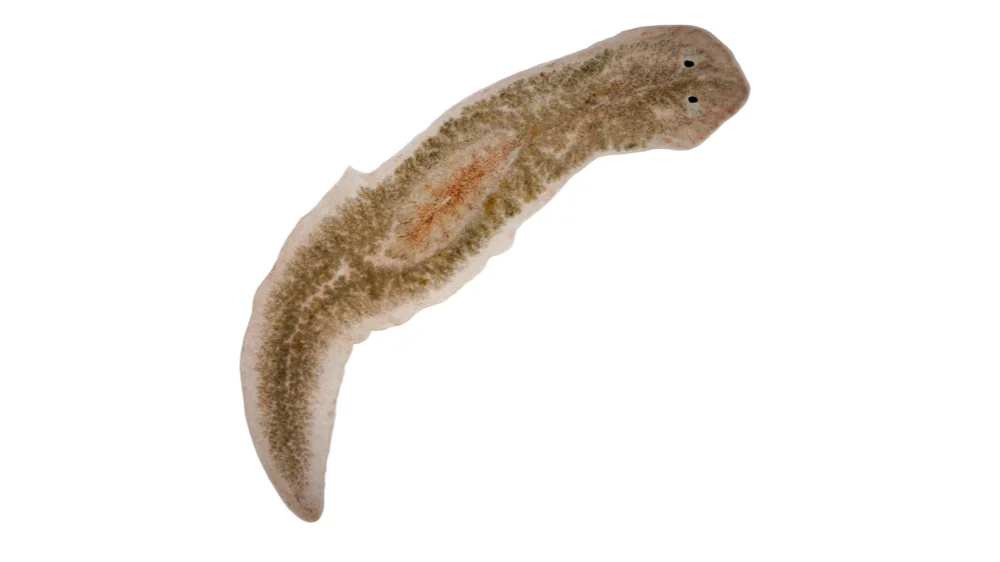In a preprint paper, researchers have evaluated the effect of caloric restriction on two long-lived planarian species in various environments that mimic the stochasticity of the real world [1].
Does the theory hold?
According to a theory that is largely based on plentiful data from model organisms, restricted food intake (caloric restriction) extends animals’ lifespans and delays their senescence. However, one shortcoming of these studies is the use of short-lived animals, such as flies and mice. Given that people are long-lived, extensive research on animals with longer lifespans is needed to get a fuller picture of caloric restriction and its effects.
There are also still many unanswered questions relating to optimal duration, the quality and composition of food, and when to begin caloric restriction. Another caveat is the constant feeding regime that is normally implemented in calorie restriction studies.
In order to get insights into these questions, the researchers conducted a series of experiments on two planarian species, Schmidtea mediterranea and Dugesia tahitiensis. They varied the quantity, quality, and frequency of food availability to see their effects on the population size, reproduction, and longevity of the animals.
Planarians are quite different from people, to say the least: they have the ability to change size depending on the availability of resources, and their regenerative abilities are like those of some starfish and earthworms, able to form whole organisms from severed parts. Nevertheless, this research design is invaluable to understand the effect of caloric restriction in realistic conditions.
Modeling the complexity of the real world
Three cultures of 10 asexual planarians of each species were initially used. The researchers then increased the overall sample size by cutting each individual twice, thus getting three individuals of the same age. At this stage, the animals were fed ad libitum followed by a starvation period.
Next, a full factorial experiment was conducted on 600 planarians of each species. This means that the researchers combined and varied several diet factors for each experimental group of 10 individuals: two levels of carbohydrate composition, three levels of food amount, and two levels of feeding frequency.
First, the researchers hypothesised that with more food available, whether amount-wise or frequency-wise, the survival of planarians would decrease. However, their experimental data did not show any difference in survival across various treatments for either species.
Second, the scientists analyzed the effect of the treatments on body size. They show that for S.mediterranea, most treatments led to a change in the population composition, with a higher number of small planarians and fewer large individuals. For D.tahitiensis, the same was observed only in planarians that were frequently fed.
Finally, the experiment did not show that the planarians’ population size was clearly dependent on food availability. In the case of S.mediterranea, most treatments resulted in population decline, while the D.tahitiensis population either remained stable or increased.
Therefore, the researchers have come to the conclusion that when multiple factors interact with reduced caloric intake, there is no beneficial effect of the latter on the survival of planarians. The outcome of reducing caloric intake in these species is thus very much dependent on the frequency, quality, and quantity of food. The optimal regime, if any, is still in question.
Abstract excerpts
CR studies are largely implemented in unrealistic environments that do not consider how interacting, stochastic drivers impact longevity. Indeed, little is known about the impact of stochastic resource availability on senescence, even though environmental stochasticity is the norm rather than an exception in natural populations. Here, we examine whether and how stochasticity in the quantity, quality, and frequency of resources impact lifespan, life history trait trade-offs, and population structure in two long-lived planaria: Schmidtea mediterranea and Dugesia tahitiensis.
As before, no clear pattern emerges in the changes in population counts under CR conditions for both species. As such, we did not find evidence of CR providing benefits in terms of lifespan nor trade-off between population counts, survival, and body size. We call for the careful reevaluation of decades of CR work in short-lived species, by expanding and testing predictions in more realistic settings and across a wider range of life histories.
Conclusion
This study calls into question the widely accepted caloric restriction theory, especially when applied to long-lived animals under realistic conditions. Although it is difficult, if not reckless, to make conclusions about the lack of caloric restriction benefits for humans based on the results obtained in planarians, we are once again reminded that more research is needed to find out what really works as a lifespan-extending approach.
Literature
[1] Deere, J. A., Holland, P., Aboobaker, A. & Salguero-Gómez, R. Calorie restriction brings no benefits to lifespan under stochastic environments. bioRxiv 2023.01.12.523873 (2023) doi:10.1101/2023.01.12.523873




